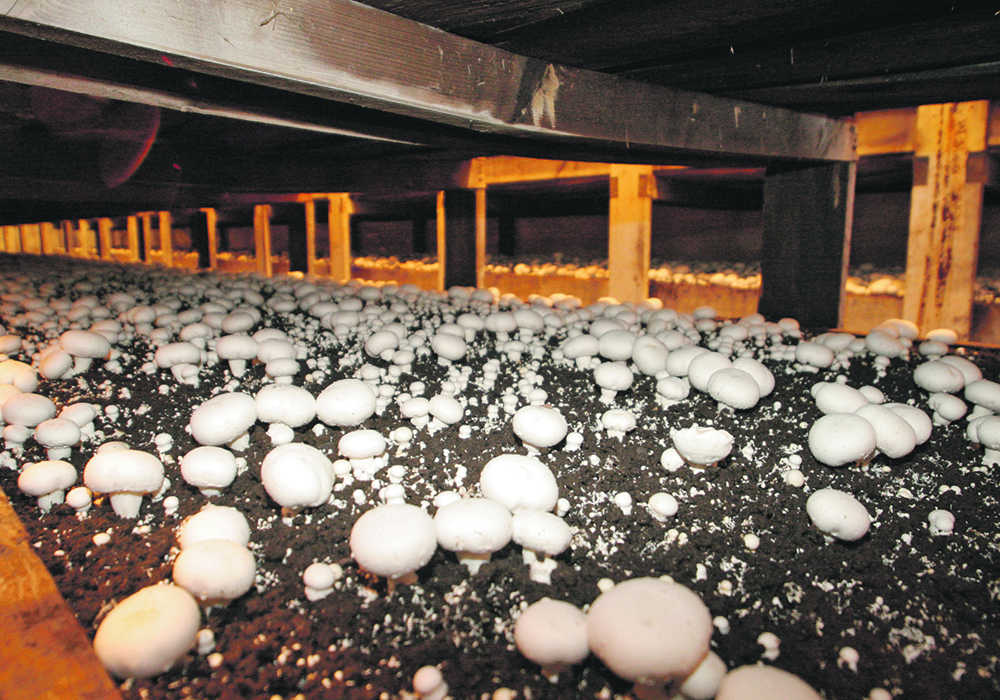Mushrooms are part of many of our favourite dishes. Whether they’re served as an appetizing stuffed mushroom cap or sliced into sauces, mushrooms are versatile ingredients.
They are often used as an alternative to meat and are capable of being barbecued and served identical to hamburgers. Low in fat and carbohydrates, mushrooms offer a healthy way to boost meal nutrition. They are also rich in B vitamins such as niacin, riboflavin, and vitamin D. Research on the health benefits of mushrooms finds that they can offer value in terms of fighting cancer, viruses, cholesterol and assisting our immune systems.
Read Also

Kochia has become a significant problem for Prairie farmers
As you travel through southern Saskatchewan and Alberta, particularly in areas challenged by dry growing conditions, the magnitude of the kochia problem is easy to see.
Until a chance meeting with the chief executive officer of Mushrooms Canada this summer, the mushroom sector was not one I had thought about much. In delving into the story, I found that it’s an interesting one.
Mushrooms are produced commercially in six of Canada’s 10 provinces. Ontario and British Columbia accounted for more than 90 percent of Canada’s total production.
In 2020, Canada produced more than 132,000 tonnes of mushrooms. In 2021, 264 farms reported growing mushrooms in the Canadian census. Of those, 41 are growing agaricus mushrooms, which include the button mushroom, on 88 percent of the mushroom production area, while the remaining 223 farms grow specialty mushrooms on 12 percent of the total production area.
Mushroom production is based on total area, rather than land, because they are grown indoors all year round. They are produced in climate-controlled buildings, in trays, and harvested roughly every two weeks. Operations with large enough production areas are capable of production rotations that harvest every day of the week. From harvest, they are quickly packaged and sold fresh through local grocery stores and as exports. Those not sold fresh enter mushroom processing plants and are sold as canned, either whole, sliced or pickled.
A 2017 assessment of global mushroom production indicates that since 1978, the cultivation of edible mushrooms has increased 30-fold. While there are more than 12,000 fungi species that are mushrooms, with about 2,000 having some degree of edibility, human consumption normally involves about 35 mushroom species. A further 200 species play a role in traditional medicinal uses.
Mushrooms commonly grow in the wild and are a popular food for people to harvest. Mushroom festivals are offered in numerous locations, with many offering educational training for novice pickers.
In recent years, wild mushroom foraging has grown in popularity. This is likely because wild mushrooms come at a high price tag in grocery stores.
It’s vital to know what varieties of mushrooms are safe for humans to eat and foragers must know which varieties they are picking. A recent German study of the toxic effects of mushroom consumption over the period 2000-18 identified more than 4,400 hospitalizations and 22 deaths. Numerous online resources are available to help inform people which wild varieties are safe to eat.
Mushroom production and farming reflect the great diversity of Canadian agriculture. Having increased my awareness of the Canadian mushroom sector, I’ll be making a more conscious effort while grocery shopping to support this aspect of Canadian agriculture.
While mushrooms may not be a central feature in weekly meal planning, Mushrooms Canada’s website offers an extensive list of recipes.
Stuart Smyth is an associate professor in the Department of Agricultural and Resource Economics at the University of Saskatchewan. He holds the Agri-Food Innovation and Sustainability Enhancement Chair. The article first appeared on the SAIFood website.

















